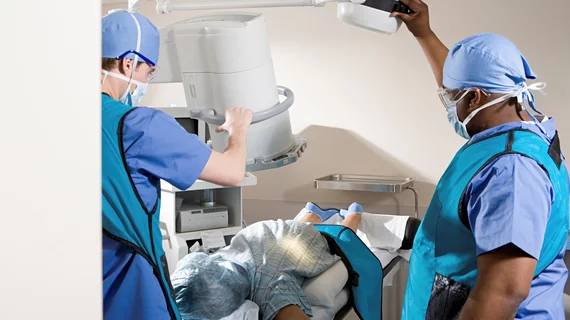Hospitals beginning to shift away from patient shielding during x-ray exams
Radiologists and medical physicists in hospitals across the country are rethinking the benefits of shielding patients during x-ray exams, with many institutions beginning to forgo the practice altogether.
Kaiser Health News took a closer look at this trend, finding that around a dozen U.S. hospitals have already changed their official policies. Lurie’s Children Hospital in Chicago hasn’t completed the protocol switch, but is launching an “Abandon the Shield” campaign to educate staff, patients and clinicians before it discontinues shielding.
The transition has even been accepted by groups in Canada and Australia, with Great Britain trailing close behind, Rebecca Marsh, a medical physicist at the University of Colorado Anschutz Medical Campus, told KHN.
In April, the American Association of Physicists in Medicine recommended that patient shielding be “discontinued as routine practice.” The American College of Radiology endorsed the guidance, but Marsh, who called the move away from shielding a “pretty substantial change,” says it is still embedded in the minds of both patients and practitioners.
“There’s this big psychological component, not only with patients but with staff,” Marsh, who spoke on the topic at the RSNA annual meeting last month, said to KHN. “How do you approach something that is so deeply ingrained in the minds of the health care community and the minds of patients?”
Read more from the Kaiser Health News story below.

